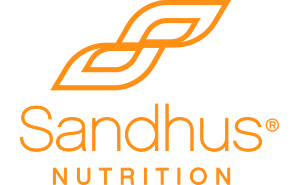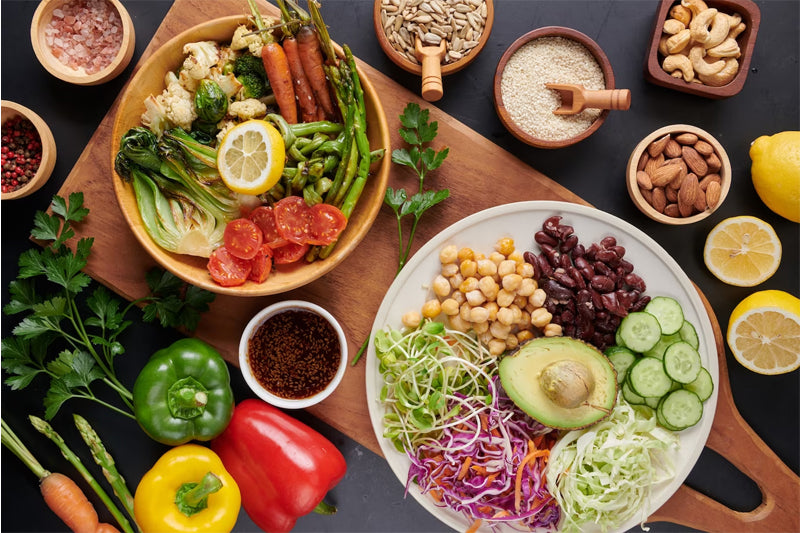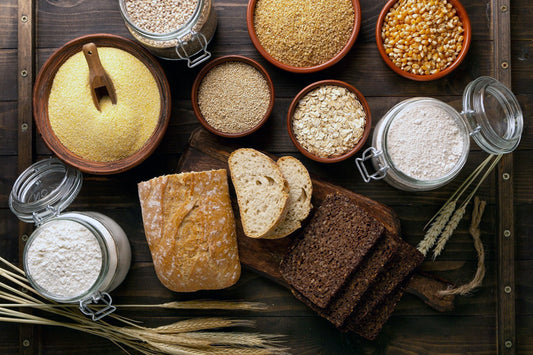Are you curious about how something found in plants can be so good for your digestion and health? Well, you're in the right place! In this blog, we will explore the top 10 fiber-packed foods that ensure your health and wellness.
What is Fiber, and Why is it Important?
Fiber is an essential component of our diet that plays a crucial role in maintaining a healthy digestive system. It is a type of carbohydrate found in plant-based foods that our bodies cannot fully digest. While this might sound like a bad thing, fiber offers numerous health benefits. It promotes bowel regularity, prevents constipation, and aids in weight management.
Different Types of Dietary Fiber: Soluble vs. Insoluble
There are two main types of dietary fiber: soluble and insoluble. Soluble fiber. dissolves in water and forms a gel-like substance in the intestines. It helps maintain cholesterol levels and stabilizes blood sugar levels, making it beneficial for individuals.
Insoluble fiber, on the other hand, adds bulk to the stool and promotes regular bowel movements. It also reduces the risk of colon cancer.
Health Benefits of a High-Fiber Diet
A high-fiber diet offers a wide array of health benefits that go beyond just promoting a healthy digestive system. Here's a closer look at the remarkable advantages of adding fiber-rich foods to your daily meals:
- Weight Management:
High-fiber foods are low in calories and provide a feeling of fullness, which can help control appetite and prevent overeating. High-fiber foods take longer to chew and digest, so you feel full for longer and are less likely to snack on unhealthy foods. By including fiber in your meals, you can effectively manage your weight and support healthy body composition.
- Heart Health:
A high-fiber diet helps with a reduced risk of heart disease and stroke. Soluble fiber from foods like oats, beans, and fruits can help lower bad cholesterol in the body. By reducing LDL cholesterol, fiber helps maintain healthy blood vessels and lowers the risk of developing cardiovascular problems.
- Reduced Risk of Cancer:
Studies have shown that a high-fiber diet can reduce the risk of certain types of cancer, particularly colon cancer. Fiber aids in maintaining regular bowel movements, preventing constipation, and promoting the timely removal of waste from the body. This helps to reduce the exposure of the colon to potentially harmful substances and reduces the risk of developing cancerous cells.
- Blood Sugar Control:
Fiber helps control blood sugar, so it is good for people who are at risk of developing type 2 diabetes. Soluble fiber slows down the absorption of sugar, preventing spikes in blood glucose levels after meals. Eating fiber-rich foods can help you manage your blood sugar levels, reduce your risk of developing type 2 diabetes, and improve your overall health.
- Improved Digestive Health:
Fiber acts as a natural regulator for the digestive system, promoting regular bowel movements and preventing constipation. It adds bulk to the stool, making it easier to pass through the intestines. Additionally, fiber acts as a prebiotic, providing nourishment for beneficial gut bacteria. A strong gut microbiome contributes to improved digestion, increased nutrient absorption, and a greater immune system.
- Longevity and Overall Wellness:
A high-fiber diet improves longevity and overall wellness. It also reduces the risk of heart disease, stroke, and certain cancers. Additionally, maintaining a healthy weight, stable blood sugar levels, and a well-functioning digestive system are crucial for overall health, all of which can be supported by incorporating fiber into your diet
Recommended Daily Fiber Intake: How Much Fiber Do You Need?
The daily recommended amount of fiber varies depending on age and gender. Children aged 1-3 years should eat about 19 grams of fiber per day, and adults should aim for 25-38 grams. However, most people fall short of these targets, so it's important to include high-fiber foods in your diet.
Fiber-Rich Foods: An Overview
To meet your daily fiber needs, it's important to know which foods are good sources of fiber. Some of the best sources of fiber include fruits, vegetables, whole grains, legumes, nuts, and seeds. Adding these foods to your daily meals can help you achieve a well-rounded, high-fiber diet.
Top 10 High-Fiber Foods for a Healthy Diet
- Whole Grains:
Foods like oatmeal, wheat bread, and brown rice are rich in fiber and can be easily incorporated into your meals.
- Oranges:
These vibrant citrus fruits are not only juicy and refreshing but also a great source of dietary fiber. Just one medium-sized orange contains around 3 grams of fiber, making it a delicious and nutritious addition to your diet.
- Legumes and Beans:
Foods like lentils, chickpeas, and black beans are excellent sources of fiber and also provide protein and other essential nutrients.
- Nuts and Seeds:
Almonds, chia seeds, and flaxseeds are not only rich in fiber but also contain heart-healthy fats.
- Avocado:
This creamy and delicious fruit is a great source of healthy fats, and also packs a significant amount of dietary fiber. Add slices of avocado to salads, sandwiches, or enjoy it as a delicious avocado toast.
- Berries:
Whether it's strawberries, blueberries, raspberries, or blackberries, these tiny fruits are bursting with flavor and fiber. They are also rich in antioxidants that help protect the body against harmful free radicals.
- Broccoli:
This cruciferous vegetable is not only packed with essential vitamins and minerals but also high in fiber. Steam or stir-fry broccoli to retain its nutritional value and enjoy it as a side dish or add it to stir-fries and salads.
- Chia Seeds:
These tiny black seeds may be small, but they are mighty when it comes to fiber content. Just one tablespoon of chia seeds can provide a good amount of fiber and can be easily added to smoothies, oatmeal, or yogurt for an extra nutritional boost.
- Lentils:
Lentils are legumes that come in various colors and sizes, such as green, brown, or red. They are not only a great source of fiber but also high in protein, making them a perfect addition to soups, stews, or as a meat substitute in vegetarian dishes.
- Quinoa:
This ancient grain is not only rich in fiber but also a complete protein, containing all essential amino acids. It is a versatile grain that can be used as a base for salads, added to stir-fries, or enjoyed as a side dish.
Adding Fiber into Your Daily Meals: Practical Tips and Recipes
Adding fiber to your diet doesn't have to be complicated. Start by making simple changes like choosing whole wheat pasta instead of refined white pasta and opting for whole-grain cereal instead of sugary options.
Overcoming Common Challenges of Increasing Fiber Intake
Increasing fiber intake can sometimes lead to bloating or gas, especially if you're not accustomed to a high-fiber diet. To overcome these challenges, it's important to gradually increase your fiber intake, drink plenty of water, and engage in regular physical activity.
Conclusion:
Embracing a Fiber-Rich Lifestyle for Optimal Health
Fiber is important for your health, and eating foods high in fiber can make a big difference. Include a variety of fruits, vegetables, whole grains, legumes, nuts, and seeds in your diet to support your digestion, reduce the risk of chronic diseases, and stay healthy overall. Remember, small changes in your daily diet can lead to big health benefits in the long run!






